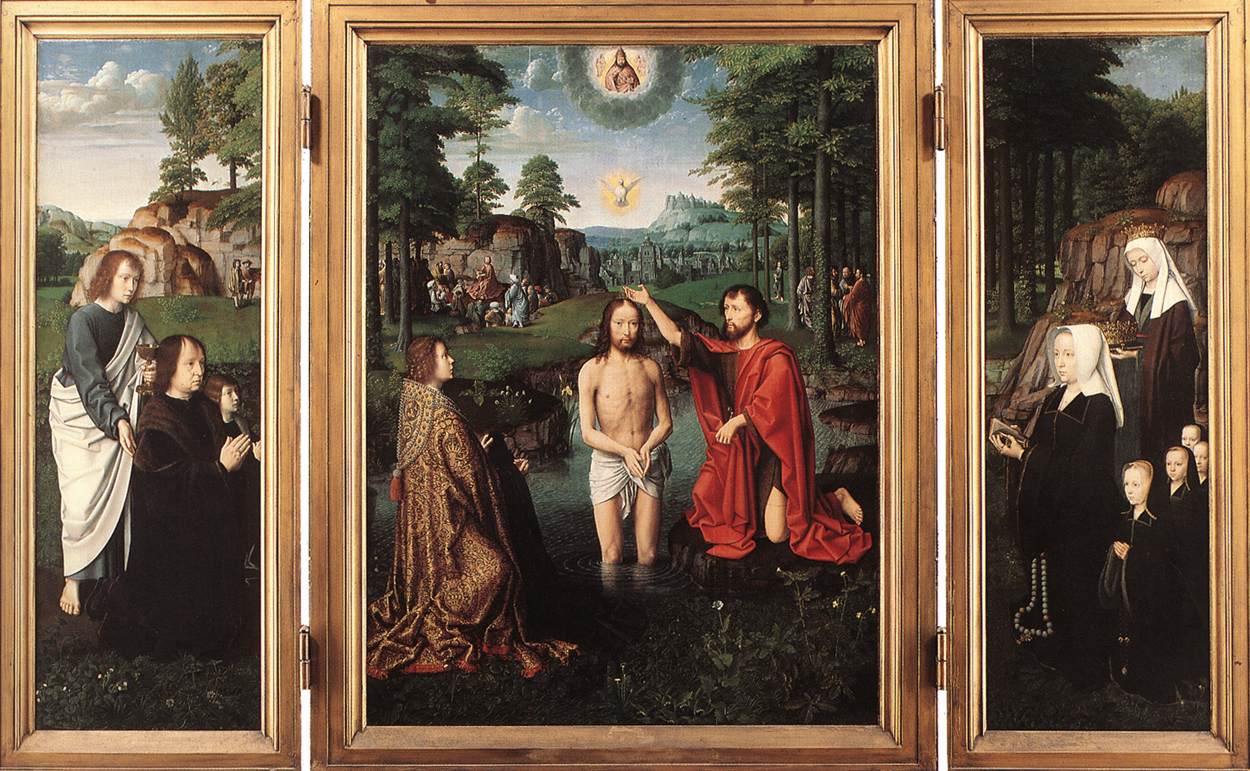Description
The Triptych of Jan Des Trompes is a 15th-century masterpiece of Flemish art, created by the renowned artist Gerard David. This painting is a triptych, that is, a work that consists of three panels, and measures 129.7 x 96.6 cm in its original size. The side panels measure 132 x 43 cm each.
Gerard David's artistic style is characterized by his ability to create realistic detail and his use of colour. In the Triptych of Jan Des Trompes, David uses an oil painting technique that allows him to create a sense of depth and texture in the work. Also, his use of color is impressive, especially in the depiction of textiles and jewelry.
The composition of the painting is impressive. The central panel represents the Crucifixion of Christ, while the side panels show Saint John the Baptist and Saint John the Evangelist. The side panels are joined to the central panel by means of an arch, which creates a sense of unity in the work. Additionally, the details on each panel are impressive, from the angels surrounding Christ to the figures on the side panels.
The history of the painting is also fascinating. It was created for the Jan Des Trompes chapel in the Church of Saint John in Bruges, Belgium. Des Trompes was a wealthy wool merchant who commissioned the work as an act of devotion. The painting has undergone restorations and changes over the years, but its beauty and historical significance remain evident.
There are little-known aspects of painting that are also interesting. For example, the figure of the Virgin Mary in the central panel is believed to have been modeled after the wife of Jan Des Trompes, adding a personal touch to the work. In addition, the painting has been the subject of analysis and study by art experts, who have discovered fascinating details about the technique and symbolism used by David.
In short, the Triptych of Jan Des Trompes is a 15th century Flemish masterpiece that stands out for its artistic style, its composition, its color and its historical importance. It is a work that continues to fascinate connoisseurs and art lovers alike, and represents one of the jewels of Belgium's cultural heritage.

